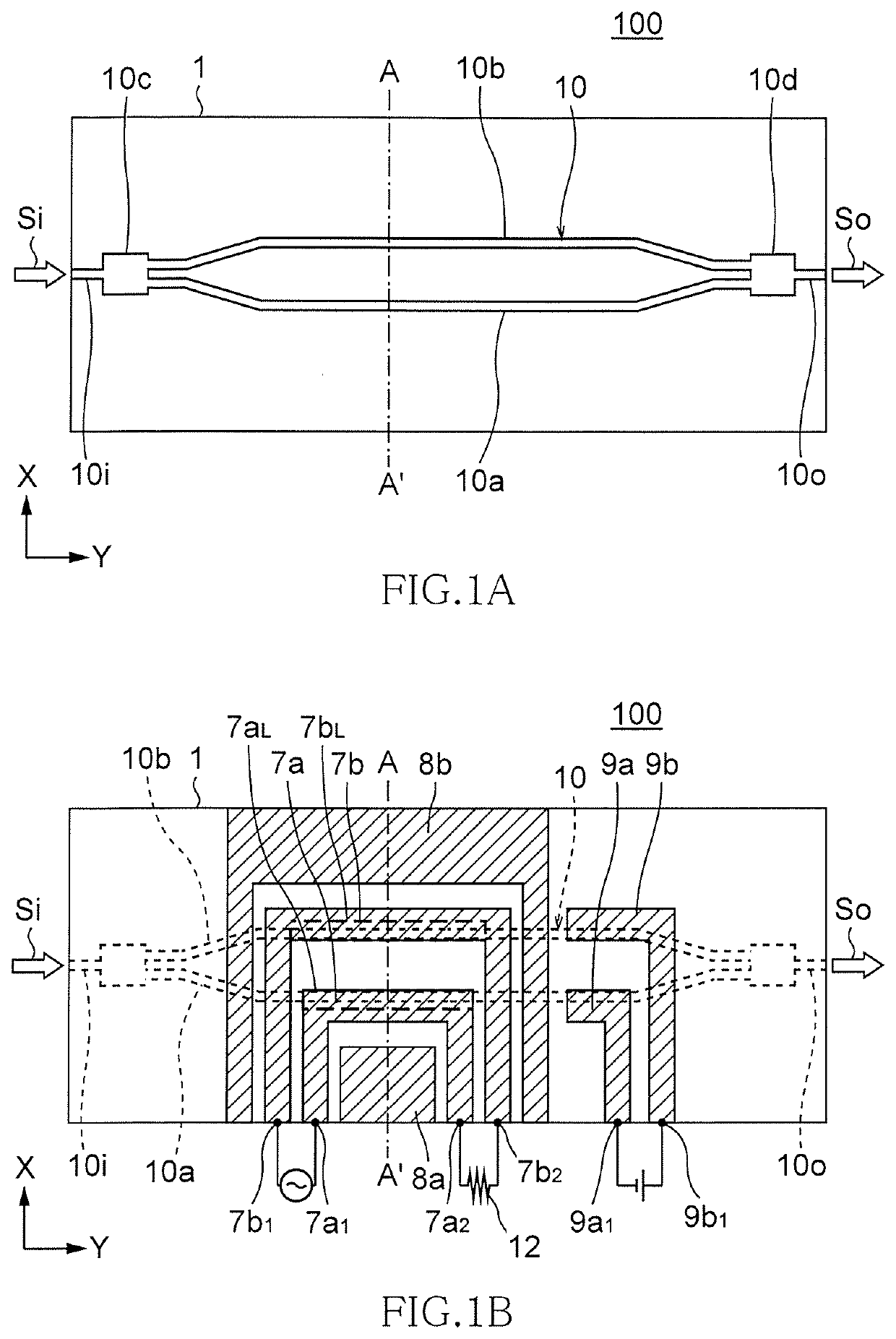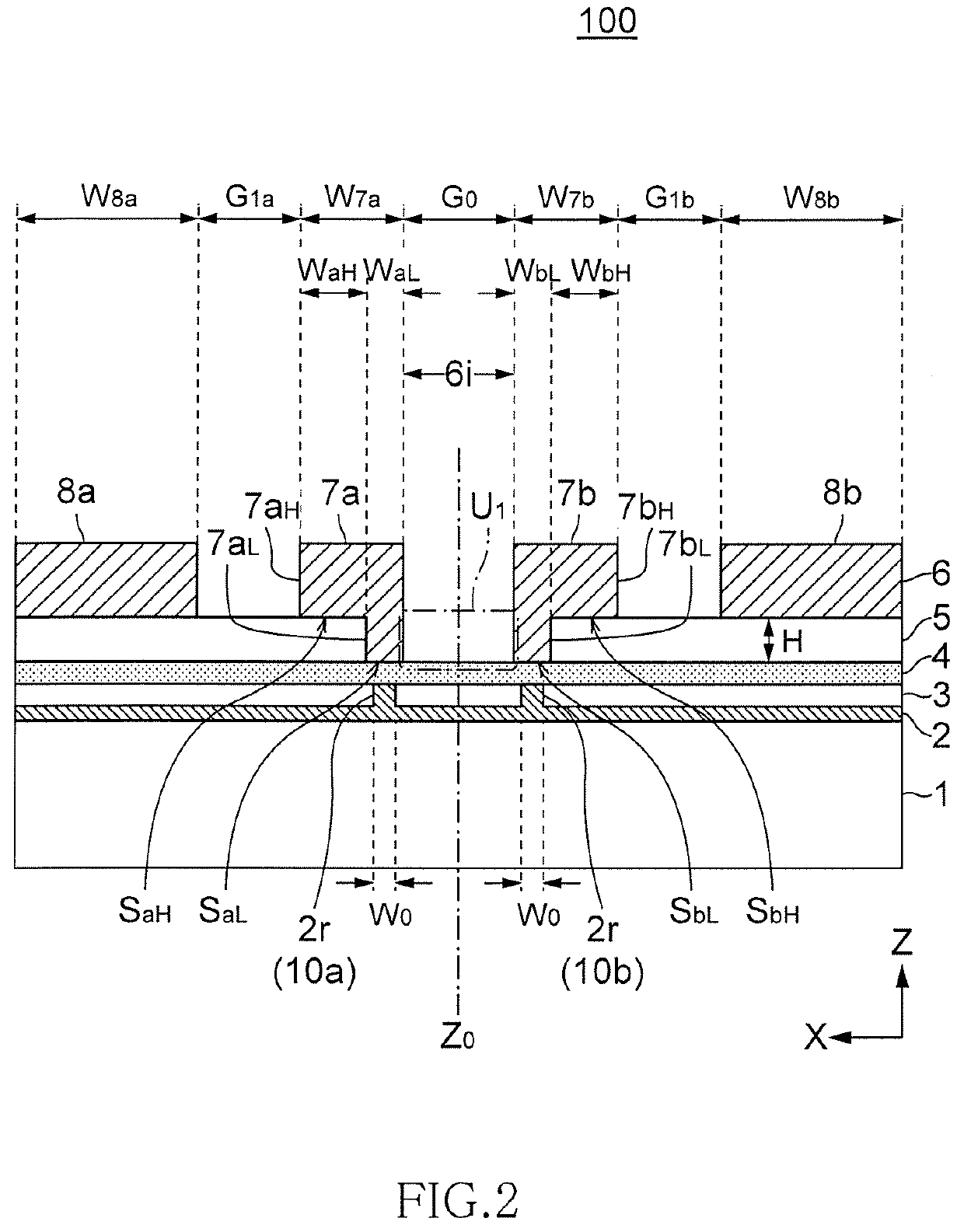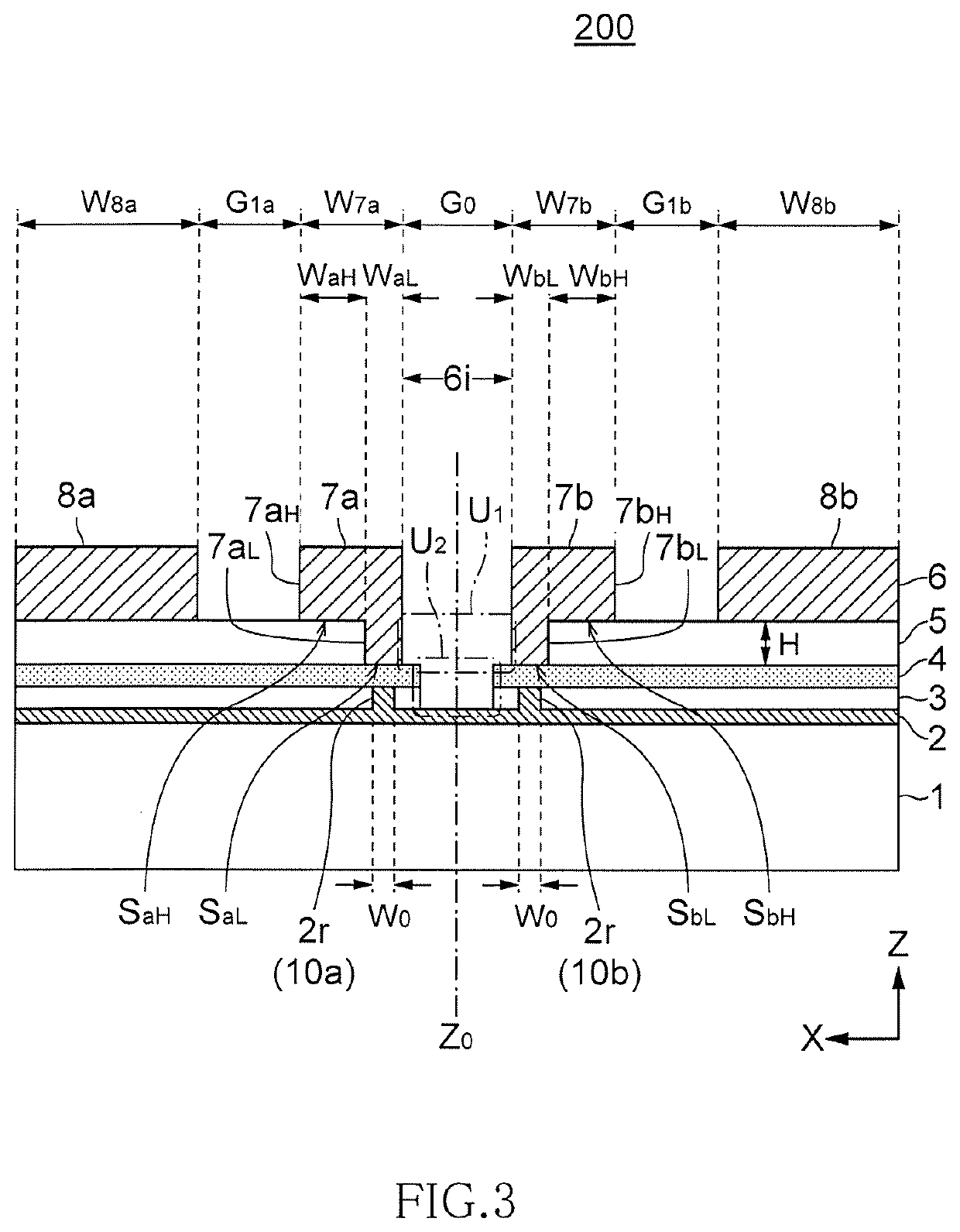Optical modulator
a modulator and optical technology, applied in non-linear optics, instruments, optics, etc., can solve the problems of preventing operation at high frequencies, limiting the high-speed modulation field, and a long length of about 10 cm, and achieve satisfactory high-frequency characteristics, low voltage, and low electrode loss
- Summary
- Abstract
- Description
- Claims
- Application Information
AI Technical Summary
Benefits of technology
Problems solved by technology
Method used
Image
Examples
examples
[0094]Electric field efficiency of an optical modulator having a cross-sectional structure illustrated in FIG. 2 was evaluated by simulation. In this optical modulator, the substrate 1 was a sapphire single crystal substrate (specific dielectric constant: 10), the waveguide layer 2 was formed of a lithium niobate film, the protective layer 3 was formed of SiO2 (specific dielectric constant: 4), the buffer layer 4 was formed of an oxide La-AL-O composed of, e.g., La and Al (specific dielectric constant: 13), the insulating layer 5 was formed of SiO2 (specific dielectric constant: 4), and the electrode layer was made of Au. The thickness of the waveguide layer 2 was 1.5 μm, the slab thickness of the waveguide layer 2 was 0.4 μm (the thickness of the ridge part 2r was 1.1 μm), the ridge width W0 of the waveguide layer 2 was 1.2 μm, the thickness of the buffer layer 4 was 0.9 μm, the gap between the first and second waveguides was 14 μm, the thickness H of the insulating layer 5 was 2 μ...
PUM
| Property | Measurement | Unit |
|---|---|---|
| length | aaaaa | aaaaa |
| thickness | aaaaa | aaaaa |
| ridge width W0 | aaaaa | aaaaa |
Abstract
Description
Claims
Application Information
 Login to View More
Login to View More - R&D
- Intellectual Property
- Life Sciences
- Materials
- Tech Scout
- Unparalleled Data Quality
- Higher Quality Content
- 60% Fewer Hallucinations
Browse by: Latest US Patents, China's latest patents, Technical Efficacy Thesaurus, Application Domain, Technology Topic, Popular Technical Reports.
© 2025 PatSnap. All rights reserved.Legal|Privacy policy|Modern Slavery Act Transparency Statement|Sitemap|About US| Contact US: help@patsnap.com



